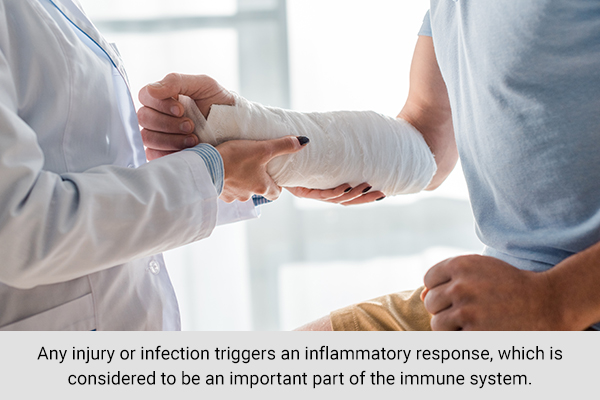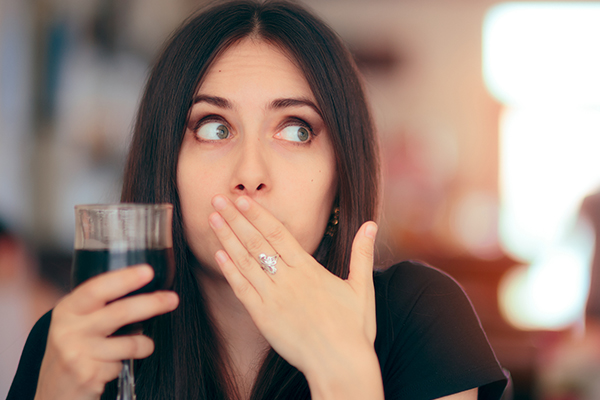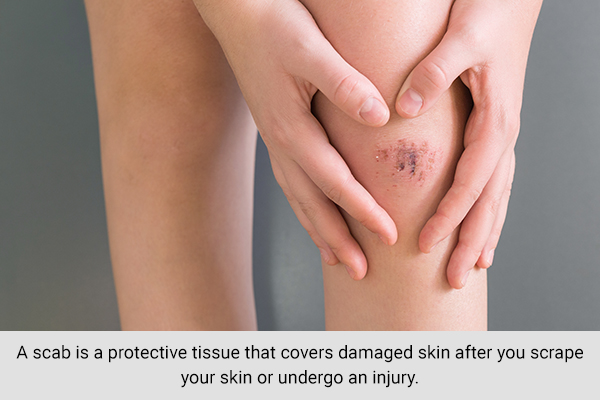In this article:
The human body is a very well-developed complex structure that is yet to be fully understood. It has complicated systems that ensure everyday wellness from day to night.

With natural biological cycles that regulate bodily functioning, the body also has self-defense mechanisms in place to protect itself.
Fascinating Things Your Body Does in Self-Defense
Your body has established different mechanisms to prevent any physical and physiological harm. Some of these self-defense mechanisms include:
- Yawning
- Inflammation
- Wet-induced wrinkled fingers
- Fever
- Hiccups
- Blinking
- Sneezing
- Scabbing
1. Yawning
Thermoregulation is a biological means of maintaining a constant internal body temperature.
According to the theory of thermoregulation, yawning helps to cool the brain as countercurrent heat exchange happens through the deep inhalation associated with yawning. That is why how much you yawn can be linked with the body’s temperature.
A study reported a reduced frequency of yawning during winters or cold periods since, in a cold environment, the body doesn’t need to cool down via heat exchange from yawning.
An improved understanding of how yawning helps regulate body temperature can be helpful in working on new treatments for those who suffer from thermoregulatory problems such as hyperthermia. (1)
2. Inflammatory response

Any injury or infection triggers an inflammatory response, which is considered to be an important part of the immune system.
Research and studies have shown that any kind of injury to a cell causes a release of chemicals that have a vasodilatory effect and contribute to inflammation, such as prostaglandins.
Inflammation serves as a defense mechanism as it helps in the elimination of injurious factors, allowing healing to begin. (2)
3. Wet-induced wrinkled fingers
On continued immersion in water, the skin on the hands and feet becomes wrinkled, and this is an active response by the nervous system. These wrinkles have an important role and function, which is better and improved handling of objects when compared to unwrinkled ones.
Research suggests that wrinkled fingers are an adaptation for handling things in wet conditions. This is because wrinkled fingers tend to decrease the grip force needed to hold a wet object. (3)
4. Fever
A defense mechanism that is evoked by infections is fever. Virus replication is affected by a rise in temperature, and even a decent increase in temperature can exert strong control over virus replication and reduce the infection rate.
Studies have shown fevers to reduce virus multiplication during human viral infections. (4)
5. Hiccups

One of the body’s ubiquitous reflexes is hiccuping.
Some studies have suggested that hiccups are the body’s mechanism to move the bolus of food that may be trapped in your esophagus through the simultaneous relaxation of the lower esophageal sphincter. However, more research is required as hiccups are not always associated with food stuck in the food pipe. (5)
Other reasons that can cause hiccups include:
- Eating too quickly or too much
- Irritation in the stomach
- Irritation in the throat
- Feeling nervous or excited (6)
6. Blinking
Blinking is a semiautonomic action where you close your eyelids. You don’t need to think about it or do it voluntarily – you’re constantly blinking!
It is an essential function to spread tears across the eyes and eliminate any irritant or foreign substance. Thus, it is an important self-defense mechanism of the body.
When you blink, your eyelashes trap dust particles or irritants before they reach your eyeball. Blinking keeps your eyes lubricated as well. (7)
7. Sneezing
The sneeze center is responsible for sneezing. When a dust particle enters your nose, a message is sent to the brain’s sneeze center, causing the muscles and the diaphragm to work together to expel the irritant.
Sneezing is an important defense mechanism during allergic reactions, infections, or sudden temperature changes. (8)
8. Scabbing

A scab is a protective tissue that covers damaged skin after you scrape your skin or undergo an injury.
At the site of injury, a blood clot is formed, which ultimately stiffens into a protective crust that is the scab. Later, as the wound heals and the skin tissue regenerates, the scab is pushed out. So, the scab is simply an indicator that wound healing is taking place.
Studies have shown that wound scabs prevent the loss of blood after an injury and provide protection against infection. It also offers natural protection against UV radiation to prohibit DNA damage in the underlying cells during the wound healing process when exposed to sunlight, thereby reducing the risk of developing skin cancer. (9)
Most-Asked Questions
Can I sneeze with my eyes open?
There is a very strong urge to close your eyes when you sneeze. The scientific explanation for it is not yet completely known; it is an involuntary reflex.
Is it bad to hold in a sneeze?
When you have the urge to sneeze, never try to hold it. Stopping yourself from sneezing can lead to an excessive buildup of pressure in your nasal passage that may not be good for you.
How do I know if there’s inflammation in my body?
The characteristic signs of inflammation include:
- Redness
- Pain
- Heat
- Swelling
Final Word
Nature has created the body in the most flawless possible way. Every aspect of the body has a crucial function from timely regulation to self-defense – everything is fascinating and well thought out.
The body prepares itself in the best ways to protect itself from various physical harms such as foreign particles and chemical triggers. These comprise the various self-defense mechanisms as shared above.
But even with these mechanisms, it is extremely important to keep yourself healthy with the right lifestyle modification and dietary interventions.
- Was this article helpful?
- YES, THANKS!NOT REALLY


